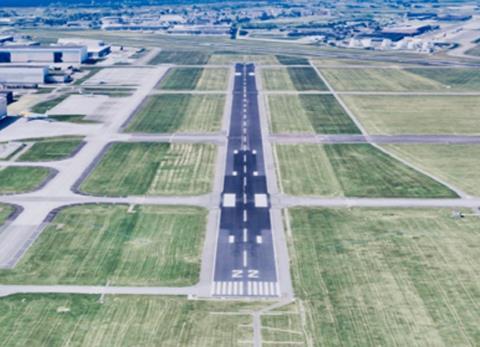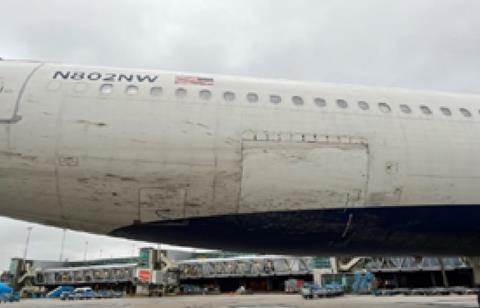Investigators have determined that a Delta Air Lines Airbus A330-300 touched down short of the runway at Amsterdam, after the crew sought to mitigate a perceived risk of overrun and descended below the glideslope.
The A330, arriving from Detroit on 12 January last year, was conducting an ILS approach to Schiphol’s runway 22 – a runway which is 2,020m (6,627ft) in length.
Delta classifies this runway as short for A330 operations, as its length is less than 9,000ft, although runway 22 is capable of handling landings by the twinjet type. The carrier also imposes a minimum 20kt headwind component requirement.
The runway has a short array of approach lights, and no touchdown or centreline lights. As the aircraft descended, in darkness with strong winds and light rain, the captain felt as if he was heading “towards a black hole”, says the Dutch Safety Board inquiry.

It adds that the pilots’ “apprehension” about the runway length “influenced their approach strategy”. The crew was “particularly pre-occupied” with the potential for overrun.
Heightening the crew’s unease was an autothrust function known as ‘ground speed mini’, which ensures the aircraft remains at final approach speed if strong headwinds suddenly dissipate. Although the function behaved as designed, the pilots were concerned they would cross the threshold with an excess of speed.
Investigators state that, as a result, the crew and focused more on speed-management than maintaining the glidepath.
“The psychological impact of landing on a seemingly short runway under adverse conditions, without specific training, likely led to a subconscious effort to land as early as possible,” says the safety board, adding that the crew perceived an overrun as a greater threat than an undershoot.
After disengaging the autopilot at 240ft the captain manually flew the aircraft, with the autothrust controlling the speed. The captain made nose-down inputs, causing the A330 to descend below the glideslope, to the point where the precision-approach path indicator showed four red lamps.
Both the Category I ILS and the PAPI on runway 22 were originally optimised for smaller aircraft types, such as Boeing 737s. They are set for a 3.1° glidepath.

But the size of the A330 means that the aircraft – especially its landing-gear – crosses the runway 22 threshold below the minimum ICAO recommended height, particularly if following the PAPI.
This “mismatch”, says the safety board, left “insufficient margin for unexpected deviations”.
Six seconds before touchdown, at 59ft, the A330 encountered a downdraught. The crew felt the aircraft sink and, at 40ft, the captain made a nose-up input increasing the pitch to 6.3°.
The aircraft, however, was too low and its main landing-gear touched down in grass 11m before the threshold.

Both bogies struck a concrete slab located 5.5m in front of the threshold and the aircraft also broke two threshold lamps.
None of the 220 passengers and 13 crew members was injured. The aircraft (N802NW) sustained only minor damage.
The inquiry says the pilots’ experience with runway 22 – and shorter runways in general – was limited, leading to a heightened focus on managing approach speed. At the time Delta did not provide short-runway training to A330 pilots.
Of the three cockpit crew the captain was the least experienced on A330s, with 601h compared with 1,083h for the augmented first officer and 1,622h for the first officer in the jumpseat.





























